|
1949 - Cricket and Chipmunks.
As has already been noted, the civil engineering firm of Wimpeys had moved the hangars from their wartime position to a new site on the north side of the aerodrome. Several of the engineers who had carried out the work were keen cricketers and members of the company team who saw the level grass surface of the aerodrome as a fine opportunity for their sport. They approached Myles Bickerton for permission to establish a cricket pitch and club in the north-east corner of the aerodrome, which was gladly given. A pavillion was erected and a pitch quickly laid out, rolled and trimmed, with the Wimpey team practising at first then playing other company teams from around the UK.
|
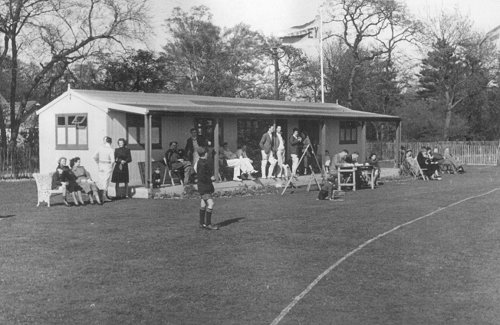
The pavillion was built next to the aerodrome groundsman's bungalow.
|
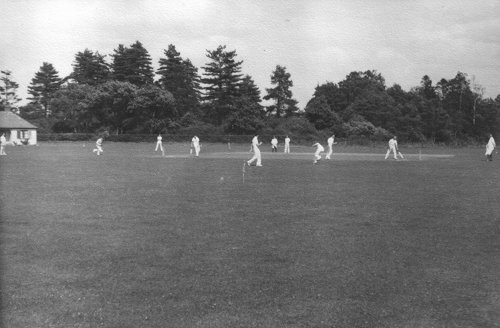
The pitch extended over the north east corner of the aerodrome, games continuing even during flying.
|
Meanwhile, on the south side of the airfield, the Denham Aero Club was operating flying training in such types as the Piper Cub G-AIYX and Auster J4 Archer G-AIPS, along with their variety of touring and air taxi aircraft. With the new shed as a base of operations, the club began to increase in popularity as visitors and relatives came to watch the flying. It was clear larger premises would be required if this popularity continued.
|
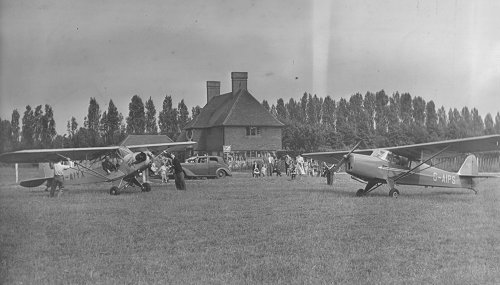
The Piper Cub and Auster Archer trainers of the Denham Aero Club at Denham in 1949. The club building is just out of shot to the right of the Auster.
|
As well as the new facilities opening on the airfield, the task of maintaining such a large area in good order was no easy one. Even with the majority of the wartime debris cleared up, the day to day work of the groundsman and other staff was vital to keep the aerodrome operating safely. Tasks ranging from rolling and mowing the grass to repairing fences and gates were supplemented with more unusual work, such as seen below.
|
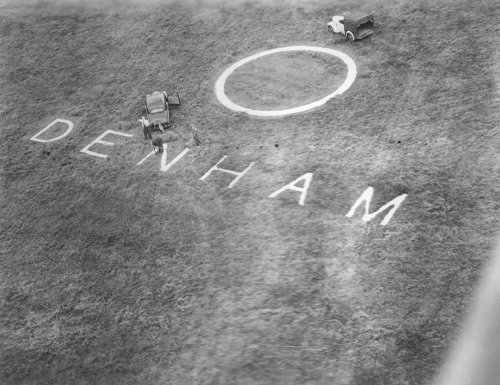
The aerodrome name and symbol was laid in concrete on the airfield and needed periodic trimming to keep it visible, as seen here.
|
Prior to the Second World War, Denham aerodrome had enjoyed an excellent working relationship with the Royal Air Force, something that continues to this day in various guises. In the 1930's, training units and front line Squadrons made training flights to Denham giving the pilots practice in navigation and operating at an unfamiliar site, all useful experience if the unit was to be deployed. These military flights began again in 1949 with the RAF's latest training aircraft, the de Havilland Chipmunk, becoming a frequent sight on the aerodrome. Students from both Reserve Flying Training Schools and University Air Squadrons benefitted from the experience landing at Denham gave them.
|
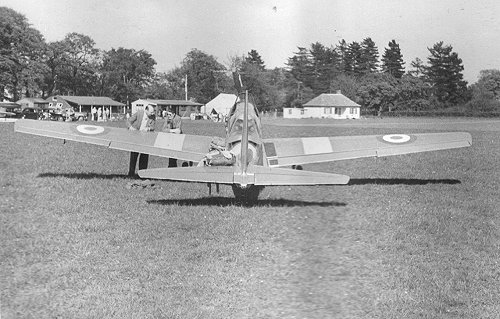
A de Havilland Chipmunk T Mk 10 of one of the Reserve Flying Schools seen at Denham in 1949.
|
With both sporting and aviation interests re-established at Denham, and the return of the RAF to visiting the aerodrome, the new decade was to see further changes to the facilities, as will be related next.
|
|

